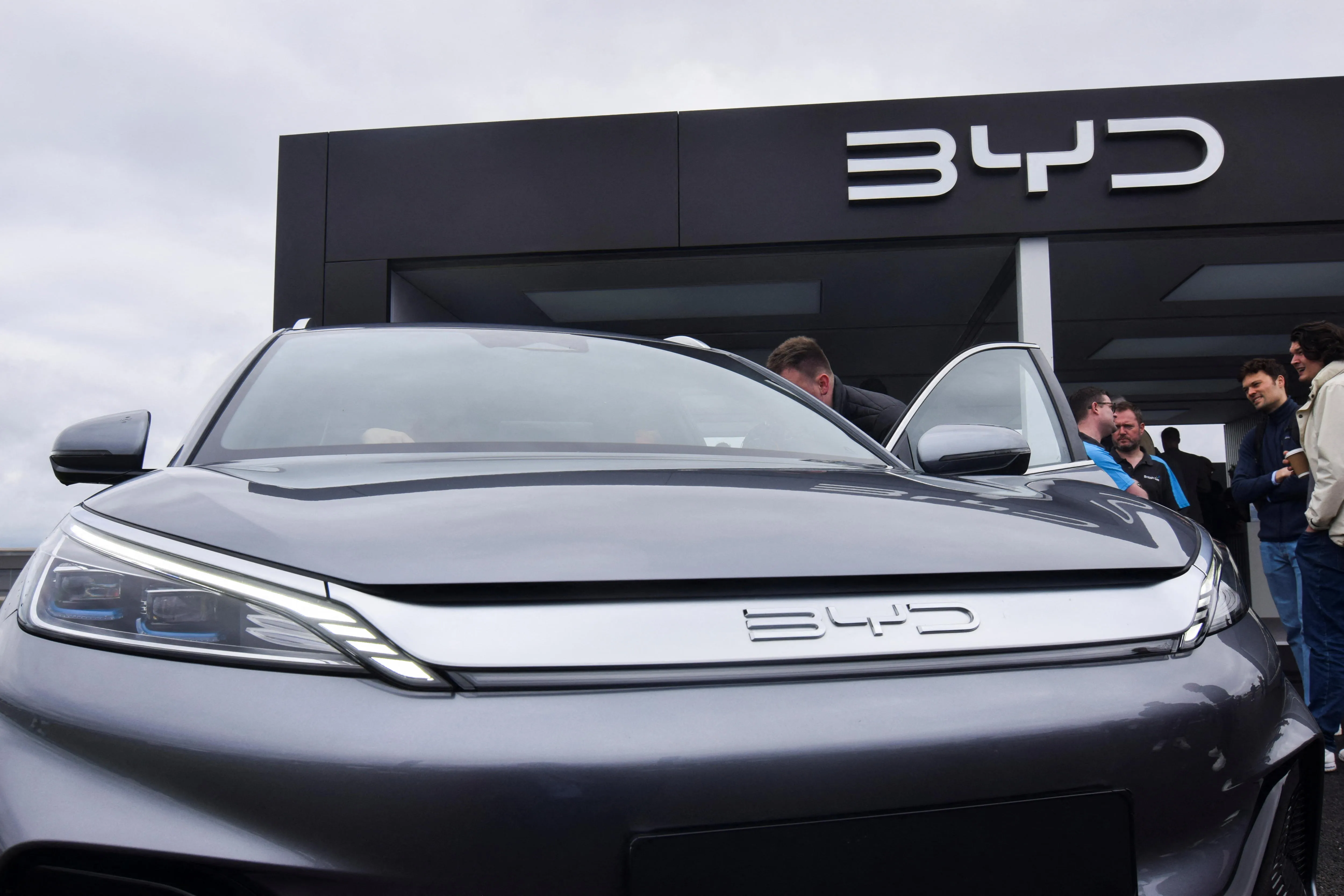Electric vehicle (EV) sales reached a significant milestone in 2024, accounting for 20% of all vehicles sold globally, according to a new report from the International Energy Agency (IEA). The IEA’s data reveals a record 17 million EVs were sold worldwide, marking a robust 20% increase compared to the previous year. Despite some market uncertainties, the EV transition is accelerating, driven by strong growth in China and emerging markets, while policy continues to be a key factor in developed regions.
Contents
- Global EV Market Overview: Numbers and Trends
- Regional Performance: Who’s Driving Growth?
- China Leads the Charge
- Emerging Markets See Significant Jumps
- Growth in Developed Markets Lags Relative Pace
- Australia’s EV Landscape
- Drivers and Headwinds Shaping the Market
- Policy Pushes and Future Projections
- Trade and Supply Chain Dynamics
- Affordability Improves Relative to Traditional Cars
- Battery Technology and Charging Infrastructure
- Conclusion: The EV Transition is Gaining Momentum
Here’s a breakdown of the key findings from the IEA report:
- Strong Global Growth: 17 million EVs sold in 2024, up 20% year-on-year.
- Market Share Milestone: EVs now represent 20% of the global car market.
- China Leads: China accounts for nearly half of global EV sales and almost half of its own domestic market.
- Emerging Market Surge: Southeast Asia and Latin America saw a 50% sales jump.
- Policy Impact: Vehicle emissions standards are crucial drivers, especially in Europe.
- Affordability Improving: Price parity between EVs and traditional cars is emerging in some markets, particularly driven by Chinese manufacturers.
Global EV Market Overview: Numbers and Trends
The IEA report highlights the undeniable upward trajectory of the electric vehicle market. The 20% market share and 17 million units sold in 2024 demonstrate continued momentum despite fluctuating economic conditions and geopolitical factors. IEA executive director Faith Birol acknowledged these uncertainties but stressed the data’s clear message: “Our numbers show that despite many headlines saying EVs were not doing good in terms of sales, our numbers show another record of 17 million EVs, or an increase of 20 per cent compared with the previous year.”
The global growth story is not uniform, with significant regional variations influencing the overall picture.
Regional Performance: Who’s Driving Growth?
The global EV market expansion is heavily influenced by performance in key regions.
China Leads the Charge
China remains the powerhouse of the EV market. In 2024, approximately 11 million EVs were sold in China, representing nearly half of the country’s total vehicle sales. This sheer volume makes China the single largest driver of global EV sales growth.
Emerging Markets See Significant Jumps
Markets in Southeast Asia and Latin America experienced substantial growth in 2024, with sales increasing by 50% compared to 2023. While starting from a lower base than more developed regions, this rapid expansion in countries like Vietnam, Thailand, Brazil, and Indonesia signals increasing adoption rates fueled, in part, by affordable models from Chinese manufacturers.
 Workers on assembly line in modern car factory, symbolizing global EV production growth and scale
Workers on assembly line in modern car factory, symbolizing global EV production growth and scale
Growth in Developed Markets Lags Relative Pace
Growth in the European Union and the United States was more modest compared to the surging emerging markets. The EU saw sales growth of 20%, while the US experienced a 10% increase in 2024. While these markets add considerable volume, their growth rate was slower than the global average and significantly less than in China or the emerging hotspots.
Australia’s EV Landscape
Australia also saw an increase in “electric vehicle” sales, which the IEA report defines broadly to include battery electric vehicles (BEVs), plug-in hybrids (PHEVs), and fuel cell electric vehicles (FCEVs). Total sales rose by 14% in 2024, reaching 112,000 units, up from 98,000 in 2023.
- PHEV Growth: Plug-in hybrid vehicles saw the strongest percentage increase, more than doubling from 11,000 to 21,000 units.
- BEV Growth: Sales of pure battery electric vehicles increased by nearly 6%, from 87,000 to 91,000.
- Popular Models: The most popular models in the Australian market included the Tesla Model Y and Model 3, as well as the BYD Atto and Seal.
- FCEVs: Fuel cell vehicles remain a niche market, predominantly used in fleets.
Drivers and Headwinds Shaping the Market
Several factors are influencing the pace and shape of the global EV transition, from government policies to manufacturing capabilities and supply chain dynamics.
Policy Pushes and Future Projections
Vehicle emissions standards are proving to be a significant catalyst for EV sales, particularly in regions like the United Kingdom and the EU. The IEA report predicts these policies will push Europe’s EV sales share to 25% in 2025. Looking further ahead, the IEA projects EVs could account for 40% of global vehicle sales by 2030.
- China’s 2030 Outlook: China is expected to continue its dominance, with EVs potentially reaching 80% of its domestic market sales by 2030.
- EU’s Potential: Based on current CO2 emission targets, the EU could see EVs reach a 60% sales share by 2030.
- US Outlook: The US market is projected to reach a 20% EV sales share by 2030.
The IEA forecasts approximately 20 million EVs will be sold globally in 2025, indicating continued expansion. [Link to Article on Global EV Policy Trends]
Trade and Supply Chain Dynamics
Trade policies and the concentration of critical mineral processing are also major forces. The EU, Canada, and the US have implemented significant tariffs, some as high as 100%, on Chinese-made EVs. This reflects concerns over market competition and supply chain control.
A key challenge highlighted by the report is China’s significant dominance in processing critical minerals essential for EV batteries, including rare earth, lithium, cobalt, nickel, and graphite. IEA Executive Director Faith Birol described this concentration as “not good news” for the industry’s future, emphasizing the need for diversification in energy security. [Link to Article on Critical Minerals Supply Chain]
Affordability Improves Relative to Traditional Cars
While EVs still carry a higher average sticker price than comparable internal combustion engine (ICE) vehicles in some developed markets like the EU (20% higher) and the US (30% higher), the gap is narrowing globally, particularly in emerging markets.
Chinese manufacturers are playing a crucial role in improving affordability in regions like Southeast Asia and Latin America. Thailand has reportedly reached price parity between EVs and ICE vehicles. In Brazil, the price difference has shrunk to 25% in 2024 from 100% the previous year. Mexico also saw the gap fall to 50% in 2024, down from 100%, contributing to Chinese imports making up a significant portion (66%) of sales in that market.
 Prospective buyers examining the interior of a new electric vehicle at a dealership, representing improving EV affordability and consumer interest
Prospective buyers examining the interior of a new electric vehicle at a dealership, representing improving EV affordability and consumer interest
Furthermore, the IEA emphasizes that the lifetime cost of running an EV is often cheaper than a conventional car. “On a kilometre-driven basis, on the data we have today with oil at $US66 a barrel, in all key markets it is cheaper to run your car with electricity,” Mr. Birol stated.
Battery Technology and Charging Infrastructure
Demand for EV batteries is projected to be the primary driver of overall battery demand in the coming years. However, the rapid adoption of electric heavy vehicles, such as trucks and buses, also significantly boosted battery demand, with this segment growing by 80% in 2024, led mainly by China.
Interestingly, the average range of EVs remained stable at around 340km across all models in 2024. The IEA suggests this stability might indicate that manufacturers are finding an optimal balance between range capabilities and manufacturing costs as market competition intensifies.
Conclusion: The EV Transition is Gaining Momentum
The IEA’s 2024 report paints a clear picture: the global electric vehicle market is expanding rapidly, driven by strong sales in China and impressive growth in emerging economies. While developed markets like the EU and US are growing slower relative to emerging regions, policy frameworks are set to boost their trajectories in the coming years.
Key factors to watch include the continued influence of government regulations, the ability of manufacturers to make EVs more affordable across all markets, and the strategic challenges posed by concentrated supply chains for critical minerals. The forecast of 20 million EVs sold in 2025 underscores that the shift towards electric mobility is not slowing down.







































